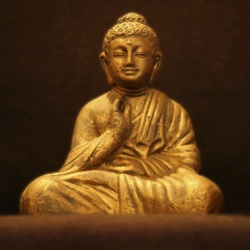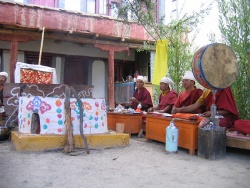Treaty of Friendship and Alliance Between the Government of Mongolia and Tibet (1913)
TREATY OF FRIENDSHIP AND ALLIANCE
Concluded Between the Government of Mongolia and Tibet at Urga 29 December 1912 (11 January 1913)
(translation of the Tibetan text)
Mongolia and Tibet, having freed themselves from the dynasty of the Manchus and separated from China, have formed their own independent States, and, having in view that both States from time immemorial have professed one and the same religion, with a view to strengthening their historic and mutual friendship the Minister for Foreign Affairs, Nikta Biliktu Da-Lama Rabdan, and the Assistant Minister, General and Manlai baatyr beiseh Damdinsurun, as plenipotentiaries of the Government of the ruler of the Mongol people, and gudjir tsanshib kanchen-Lubsan-Agvan, donir Agvan Choinzin, director of the Bank Ishichjamtso, and the clerk Gendun Galsan, as plenipotentiaries of the Dalai Lamae ruler of Thibet,'have made the following agreement.
Article 1. The ruler of Tibet, Dalai Lamas and recognizes the formation of an independent Mongol State, and the proclamation, in the year of the pig and the ninth day of the eleventh month, of Chjebzun Damba Lama of the yellow faith as ruler of the country.
Article 2. The ruler of the Mongol people, Chjebzun Damba Lama, approves and recognizes the formation of an independent (Thibetan) State and the proclamation of the Dalai Lama as ruler of Thibet.
Article 3. Both States will work by joint consideration for the well-being of the Buddhist faith.
Article 4. Both States, Mongolia and Thibet, from now and for all time will afford each other assistance against external and internal dangers.
Article 5. Each State within its own territory will afford assistance to the subjects of the other travelling officially or privately on affairs of religion or State.
Article 6. Both States, Mongolia and Thibet, as formerly, will carry on a reciprocal trade in the products of their respective countries in wares, cattle, &c., and will also open industrial establishments.
Article 7. From now the granting of credit to anyone will be permitted only with the knowledge and sanction of official institutions. Without such sanction Government institutions will not consider claims.
As regards contracts made previous to the conclusion of the present treaty, where serious loss is being incurred through the inability of the two parties to come to terms, such debts may be recovered by (Government) institutions, but in no case shall the debt concern "shabinars" or "khoshuns."
Article 8. Should it prove necessary to supplement the articles of the present treaty, the Mongolian and Thibetan Governments must appoint special delegates, who will conclude such agreements as the conditions of the time shall demand.
Article 9. The present treaty shall come into force from the date of its signature.
Plenipotentiaries from the Mongolian Government for the conclusion of the treaty: Nikta Biliktu Da-Lama Rabdan, Minister for Foreign Affairs; and General and Manlai baatyr beiseh Damdinsurun, Assistant Minister.
Plenipotentiaries from the Dalai Lamae ruler of Thibet, for the conclusion of the treaty: Gudjir tsanshib kanchen Lubsan-Agvan, Choinzin, the Director of the Bank of Thibet Ishichjamtsa, and the clerk, Gendun-�Galsan.
Signed (by Mongol reckoning) in the fourth day of the twelfth month of the second year of the "Raised by the Many," and by Thibetan reckoning on the same day and month of the year of the "water-mouse."
Notes
1. Source: FO 535/16, No. 88, Inclosure 1, 1913.

